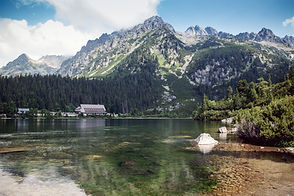
Well-being & Culinary tourism
Austria’s stunning natural landscapes, emphasis on health and wellness, and a long tradition of spa culture make it an ideal destination for well-being tourism.
Strengths of Austrian Well-Being Tourism
1. Thermal Spas and Wellness Hotels:
Austria has numerous thermal springs and wellness centers, particularly in regions like Styria and Salzburg such as Rogner Bad Blumau (Styria) and Therme Loipersdorf (Styria): One of the largest thermal spas in Europe.
2. Alpine Retreats:
The Austrian Alps provide a tranquil environment for relaxation and rejuvenation. Many resorts combine wellness services with outdoor activities which offer luxurious spa hotels and mountain retreats.
3. Health Tourism and Medical Wellness:
Austria has a strong tradition of health tourism, offering services ranging from therapeutic mud baths to advanced medical treatments -Bad Gastein and Bad Hofgastein are known for their radon therapy and healing climate.
4. Nature-Based Well-Being:
Austria's pristine natural landscapes, including lakes and forests, are ideal for reconnecting with nature for cycling, and Nordic walking etc.
5. Culinary Well-Being:
Austria emphasizes fresh, locally sourced ingredients in its cuisine, with many wellness resorts offering tailored nutrition programs - like Styria are known as the “Green Heart of Austria” for their organic produce, pumpkin seed oil, and wines.
Culinary Tourism
The country is deeply rooted in farm-to-table practices, emphasizing fresh, locally sourced ingredients.
1. Traditional Dishes
-
Wiener Schnitzel: Breaded and fried veal or pork cutlet, served with potato.
-
Käsespätzle: A cheesy noodle dish popular in alpine regions.
2. Desserts and Pastries
-
Sachertorte: A decadent chocolate cake from Vienna.
-
Apfelstrudel: Apple strudel with a thin pastry crust.
3. Wine and Spirits
-
Austria is famous for its white wines, particularly Grüner Veltliner and Riesling, produced in regions like Wachau and Burgenland.
-
Schnapps: A traditional fruit brandy made from apricots, plums, or pears.
4. Coffeehouse Culture
Vienna’s historic coffeehouses, such as Café Sacher, are UNESCO-recognized and serve classic brews like Einspänner and Melange.











